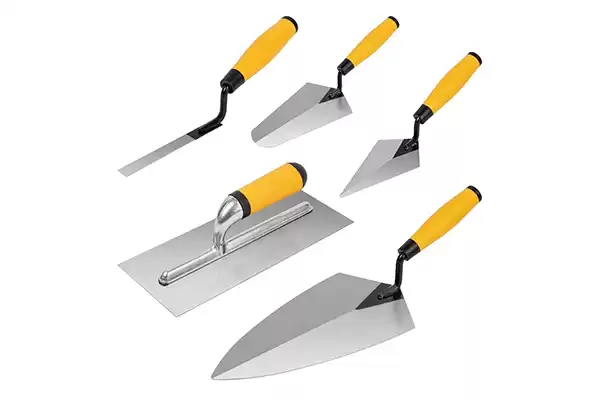Choosing the Right Plaster Trowel for Your Project
When it comes to plastering, having the right tools can make all the difference in achieving a smooth and professional finish. One essential tool that every plasterer needs is a plaster trowel. But with so many options available, how do you know which trowel to use for your specific project? In this article, we will guide you through the process of selecting the perfect plaster trowel, ensuring that you have the right tool in your hand to create stunning plasterwork.
Understanding the Different Types of Plaster Trowels
Plaster trowels come in various shapes and sizes, each designed for specific tasks and techniques. Let’s explore the different types of plaster trowels and their applications:
Finishing Trowels: Achieving a Smooth and Polished Surface
Finishing trowels, also known as float trowels, are the most commonly used trowels in plastering. These trowels have a flat, rectangular shape with rounded edges and a handle positioned at the center. They are primarily used for applying the final layers of plaster and achieving a smooth, polished surface. Finishing trowels allow you to spread and level the plaster evenly, eliminating any imperfections and creating a flawless finish. If you’re looking to achieve a professional result with a smooth texture, a finishing trowel is your go-to tool.
Corner Trowels: Perfecting Those Hard-to-Reach Areas
As the name suggests, corner trowels are designed specifically for working in tight corners and hard-to-reach areas. These trowels have a triangular shape with a narrow, pointed tip, allowing you to apply and smooth plaster in corners with precision. Corner trowels are particularly useful when plastering around door frames, window sills, and other architectural features. Their unique shape ensures that you can achieve a clean and seamless finish even in the most challenging spots.
Notched Trowels: Creating Texture and Adhesion
Notched trowels, also known as comb trowels, have a distinctive notched edge along one side of the blade. These trowels are primarily used for applying adhesive or textured coatings, such as render or stucco. The notches on the blade create grooves or ridges in the plaster, allowing for better adhesion and creating a textured surface. Notched trowels come in various notch sizes, which determine the depth and width of the grooves. If you’re looking to add texture or apply adhesive coatings, a notched trowel is the tool for the job.
Factors to Consider When Choosing a Plaster Trowel
Now that we’ve explored the different types of plaster trowels, let’s delve into some factors to consider when selecting the right trowel for your project:
Size and Blade Material
The size of the trowel is an important consideration. Smaller trowels are ideal for intricate work and tight spaces, while larger trowels are better suited for larger areas. Additionally, consider the blade material. Stainless steel blades are durable and resistant to rust, while carbon steel blades are more flexible and can be easier to work with. Choose a size and blade material that aligns with the scale and requirements of your plastering project.
Handle Comfort and Grip
The comfort and grip of the trowel handle are crucial for extended periods of use. Look for a trowel with an ergonomic handle that provides a comfortable grip and reduces strain on your hand and wrist. Some handles are made of wood, which can offer a traditional feel, while others are made of rubber or soft-grip materials for enhanced comfort. Consider your personal preference and choose a handle that feels comfortable and secure in your hand.
Budget and Quality
Like any tool, plaster trowels come in a range of prices and quality levels. It’s important to consider your budget and balance it with the quality and durability you require. While it may be tempting to opt for the cheapest option, investing in a higher-quality trowel can save you money in the long run, as it will last longer and perform better. Look for reputable brands and read reviews to ensure that you’re getting a trowel that will withstand the demands of your plastering projects.
Conclusion
In conclusion, selecting the right plaster trowel is essential for achieving professional and visually appealing plasterwork. Whether you need a finishing trowel for a smooth surface, a corner trowel for intricate corners, or a notched trowel for textured coatings, understanding the different types of plaster trowels and considering factors such as size, blade material, handle comfort, and budget will help you make an informed decision. So, before you embark on your next plastering project, take the time tochoose the perfect plaster trowel for the job. With the right tool in hand, you’ll be able to create stunning plasterwork that will stand the test of time.
Post time: Feb-01-2024







